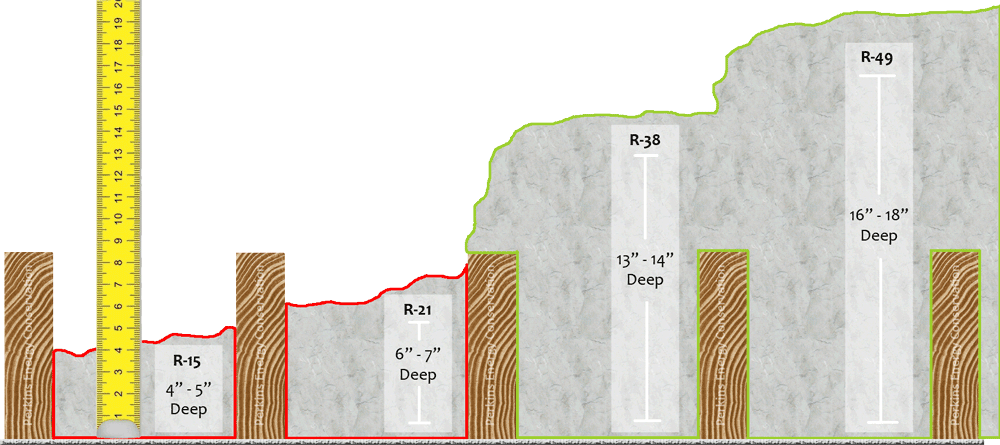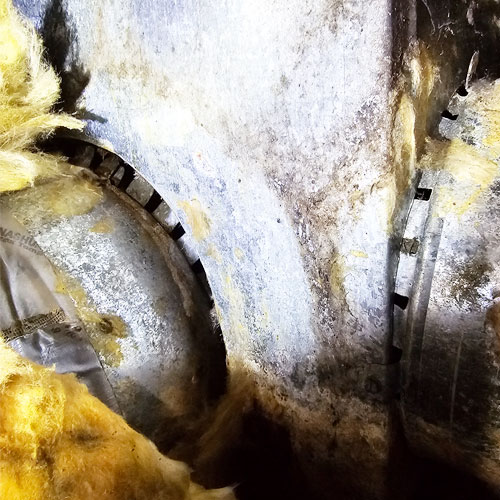Open And Closed Spray Foam
Open-cell spray foam is a lighter and more flexible insulation option that excels in sound absorption and is ideal for interior applications. Closed-cell spray foam, on the other hand, is denser and provides a robust moisture barrier, making it suitable for both indoor and outdoor use, offering superior insulation and structural support.
Air Seal With Foam
Air sealing with spray foam is a comprehensive solution to minimize air leakage in buildings. Applied as a foam that expands to fill gaps and cracks, it creates an airtight seal, enhancing energy efficiency and contributing to a more comfortable and controlled indoor environment.
Insulate With Foam
Spray foam insulation is a cutting-edge solution for insulating homes and buildings, forming a seamless and highly effective thermal barrier. Its ability to expand and fill gaps ensures complete coverage, providing superior insulation performance that enhances energy efficiency and contributes to a more comfortable living or working environment.
Spray Foam Is The Future Of Insulation
Spray Foam Is The Future Of Insulation
Spray foam insulation represents the future of insulation technology, revolutionizing the way we approach energy efficiency and building performance. Spray foam insulation is applied as a liquid that expands into a foam, filling gaps and forming a seamless barrier. This airtight seal not only minimizes heat loss but also inhibits the infiltration of outside air, providing homeowners with enhanced indoor comfort year-round. The versatility of spray foam makes it suitable for various applications, from insulating walls and attics to sealing gaps around windows and doors. Its ability to conform to irregular spaces and create a tight thermal envelope sets it apart as a leading choice for modern home insulation.
Beyond its insulation capabilities, spray foam contributes to a healthier indoor environment by preventing moisture infiltration and deterring mold growth. This dual function makes it an ideal choice for homeowners looking to improve their home's energy efficiency while maintaining optimal air quality. While the upfront cost of spray foam insulation may be higher than traditional alternatives, its long-term benefits, including reduced energy bills and increased home value, make it a wise investment for those seeking a sustainable and comfortable living space.

Spray Foam Insulation - Open Cell

Open-cell spray foam insulation is a game-changer for homeowners seeking efficient and versatile insulation solutions. When applied in home walls, it works wonders by expanding into every crevice, forming a seamless barrier that reduces air infiltration and enhances thermal performance. In attics, this innovative foam not only insulates but also air-seals, effectively preventing drafts and maintaining a consistent indoor temperature. Additionally, open-cell spray foam is perfect for vertical attic surfaces, providing optimal coverage to ensure your home remains cozy in winter and cool in summer. With its ability to address both insulation and air sealing needs, open-cell spray foam is a smart investment for homeowners looking to boost energy efficiency and comfort throughout their living spaces.
Open cell foam is also used to transforming your attic into a conditioned space. This innovative insulation material is sprayed directly onto the underside of the roof deck and attic surfaces to create a completly air tight thermal boundry. This preventing heat transfer and ensuring that your attic remains at a consistent temperature of 2 to 10 degrees difference of your home year-round. This conditioned attic space not only enhances overall home energy efficiency but also minimizes temperature extremes, making it an ideal solution for homeowners looking to create a more comfortable and controlled living environment while drasticaly reducing energy bills.
Why Choose Open Cell:
- Open-cell spray foam provides excellent thermal insulation, reducing heat transfer and enhancing energy efficiency in homes and buildings.
- Its expansive nature allows it to fill gaps and cracks, creating a seamless and airtight barrier that prevents drafts and minimizes air leakage.
- Ideal for various applications, including walls and attics, open-cell spray foam adapts to irregular spaces, providing comprehensive coverage.
- The open-cell structure of the foam contributes to superior sound absorption, improving indoor acoustics and reducing noise transfer between spaces.
- Generally more affordable than closed-cell spray foam, open-cell insulation offers a cost-effective solution for homeowners seeking energy efficiency.
- By reducing heat loss, preventing drafts, and managing moisture, open-cell spray foam contributes to a more comfortable and controlled indoor environment year-round.


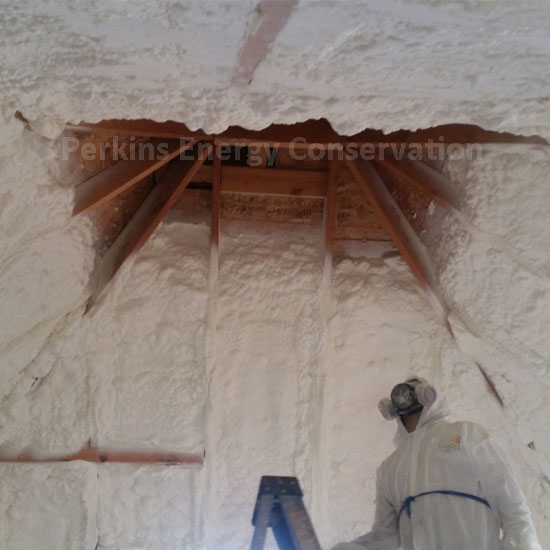

Spray Foam Insulation - Closed Cell

Closed-cell spray foam insulation is a powerhouse solution for both residential and commercial applications, particularly in metal buildings. Composed of a dense, rigid foam, this insulation material provides exceptional structural support and insulation in one application. When applied, it creates a seamless, impermeable barrier that not only reduces heat transfer but also reinforces the structural integrity of the building. In homes, closed-cell spray foam is highly effective in tight spaces, such as walls and crawlspaces, offering superior insulation and moisture resistance. Its ability to adhere to surfaces and provide a durable, waterproof seal makes it an excellent choice for areas prone to humidity or potential water exposure.
In commercial or metal buildings, closed-cell spray foam stands out for its ability to create an air and moisture barrier, enhancing energy efficiency and preventing issues like condensation that can affect metal structures. The material's rigidity adds structural strength, contributing to the durability of the building. Its capacity to conform to irregular shapes and seal hard-to-reach areas makes closed-cell spray foam a top choice for insulating metal buildings, ensuring optimal energy performance and a controlled indoor environment. While the upfront cost may be higher than some alternatives, the long-term benefits, including energy savings and increased building longevity, make closed-cell spray foam a cost-effective and reliable insulation solution.
Why Choose Closed Cell:
- Closed-cell spray foam provides high R-values per inch, offering superior thermal insulation to keep your space comfortably conditioned.
- Its rigid nature adds structural strength, contributing to the overall integrity and durability of the building.
- Creates an airtight seal, minimizing air leakage and drafts, leading to increased energy efficiency and reduced heating and cooling costs.
- Adheres to various surfaces and can be applied in tight spaces, making it suitable for walls, crawlspaces, and areas with irregular shapes.
- Provides a durable and long-lasting insulation solution that requires minimal maintenance over time.
- Enhances the overall energy efficiency of the building, contributing to potential energy savings and increased property value.
- The closed-cell structure acts as a moisture barrier, preventing water infiltration and reducing the risk of mold and mildew growth.
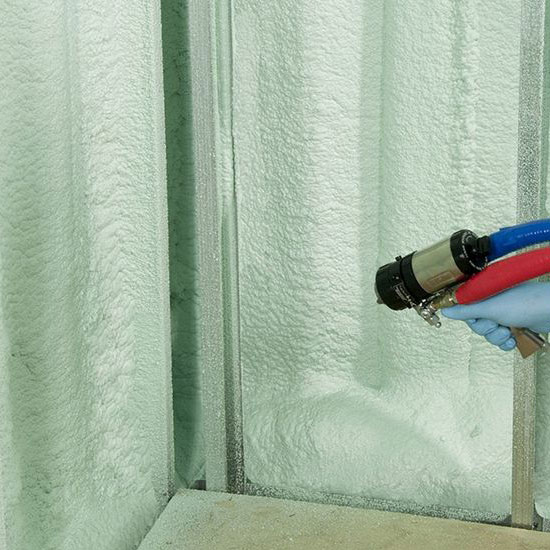
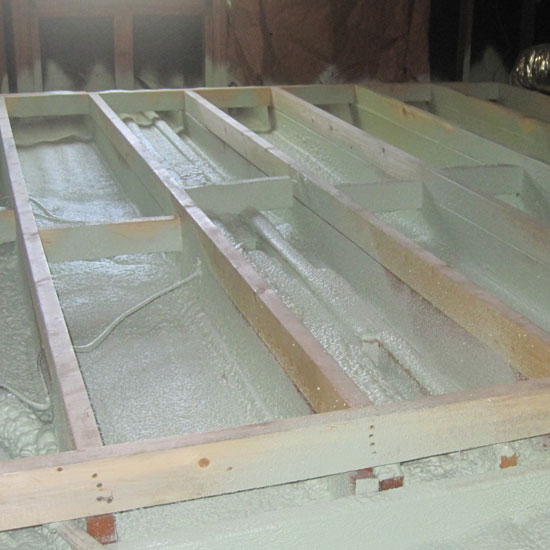


What Comes Next?
Blower Door Test
Duct Leak Sealing
Enjoy You Home
Request A Quote
Is Your Attic Costing You Money?!?!
All it takes is a quick peek to find out! Many older homes have more air leaks and less insulation than homes built today. If your attic floor is insulated but the wood beams (joists) are still visible, you probably don’t have enough attic insulation and it wouldn’t be a bad idea to reach out to us today for a free insulation quote!
